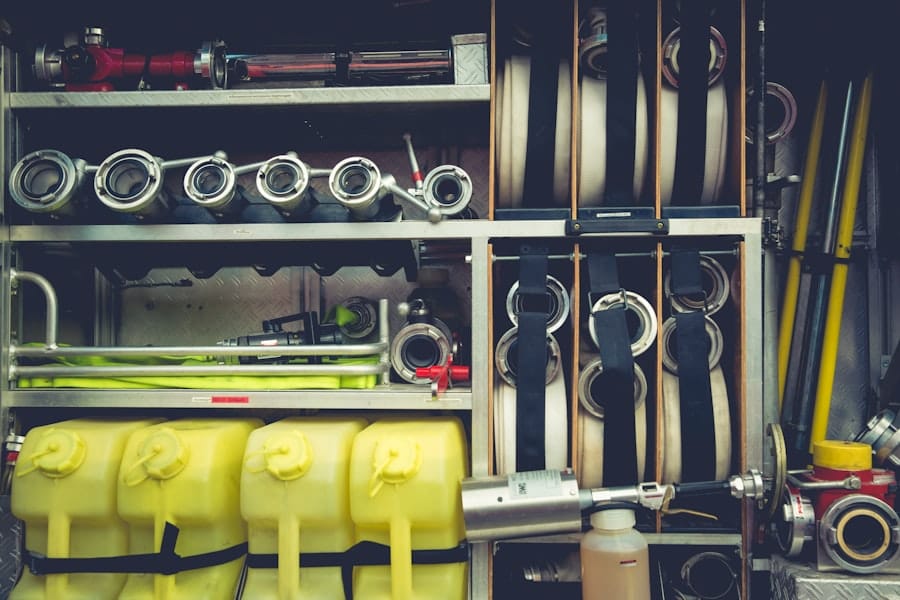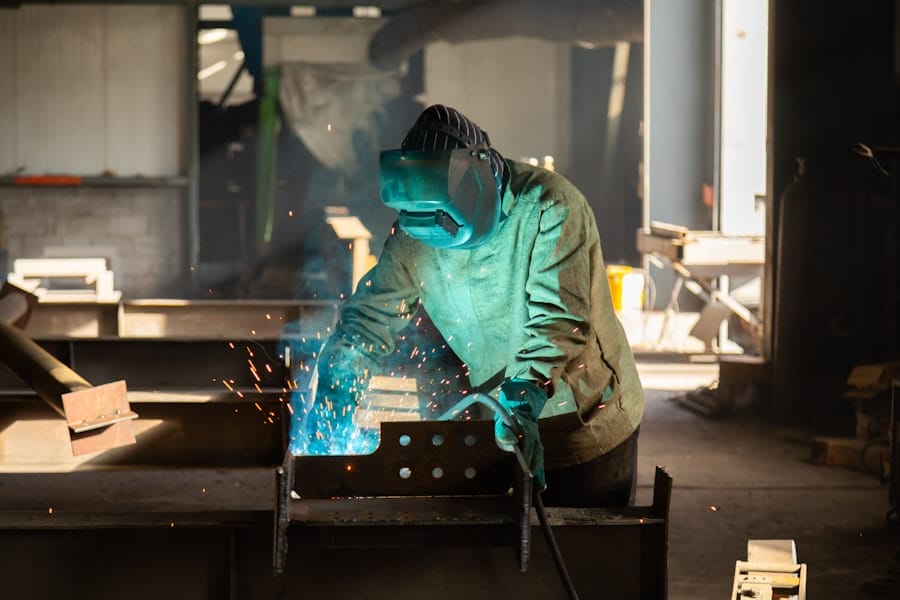Steel manufacturing is a vital industry in Odisha, India, with Rourkela serving as a major production center. The city hosts several large steel plants, contributing significantly to India’s steel output. This industry has been instrumental in driving economic growth and development in the region, providing employment and boosting local prosperity.
However, steel production involves inherent risks and hazards that require careful management to protect workers and the environment. Safety in steel manufacturing is critical for worker well-being, accident prevention, and environmental protection. The industry faces numerous potential hazards, including exposure to extreme temperatures, operation of heavy machinery, and handling of hazardous materials.
These risks necessitate a comprehensive approach to safety management. By implementing thorough safety measures and protocols, steel manufacturers can create a secure work environment and demonstrate their commitment to responsible and sustainable operations.
Key Takeaways
- Steel manufacturing industry in Odisha, Rourkela plays a significant role in the region’s economy and development, emphasizing the importance of safety in the manufacturing processes.
- Quantitative Risk Assessment (QRA) is a crucial tool in identifying and assessing potential hazards in steel manufacturing, helping to ensure the safety of workers and the surrounding environment.
- Elion brings expertise and experience in conducting QRA, collaborating with steel manufacturing companies in Odisha, Rourkela to implement safety measures and protocols.
- Common hazards in steel manufacturing processes include chemical exposure, high temperatures, and heavy machinery, highlighting the need for QRA to identify and mitigate these risks.
- QRA findings are utilized to develop and implement specific safety measures in steel manufacturing facilities, with ongoing monitoring and evaluation to drive continuous improvement in safety protocols.
Understanding Quantitative Risk Assessment (QRA)
Understanding QRA in Steel Manufacturing
Quantitative Risk Assessment (QRA) is a systematic and analytical process used to evaluate the potential risks and hazards associated with industrial activities, including steel manufacturing. The primary purpose of QRA in the context of steel manufacturing is to quantitatively assess the likelihood and consequences of various hazards, such as fires, explosions, chemical releases, and structural failures, in order to inform decision-making and risk management strategies.
Key Components of QRA
QRA provides valuable insights into the potential impact of identified hazards, allowing companies to prioritize safety measures and allocate resources effectively. Key components of QRA include hazard identification, consequence analysis, frequency analysis, and risk estimation. Hazard identification involves identifying and categorizing potential hazards within the steel manufacturing process, while consequence analysis assesses the potential outcomes of these hazards, such as property damage, injuries, or environmental contamination. Frequency analysis examines the likelihood of specific events occurring, and risk estimation combines the likelihood and consequences to quantify the overall risk level.
Methodologies Used in QRA
Methodologies involved in QRA may include fault tree analysis, event tree analysis, and probabilistic risk assessment, which utilize mathematical models and statistical data to assess risk scenarios. These methodologies provide a structured approach to identifying and evaluating potential hazards, allowing companies to make informed decisions about risk management and mitigation strategies.
Elion’s Role in Implementing QRA in Odisha, Rourkela

Elion is a leading provider of risk assessment and safety consulting services with extensive expertise in implementing QRA in industrial settings, including steel manufacturing facilities. The company brings a wealth of experience and technical knowledge to the table, enabling them to conduct comprehensive risk assessments and develop tailored safety solutions for their clients. In Odisha, Rourkela, Elion has played a pivotal role in collaborating with steel manufacturing companies to implement QRA processes and enhance safety standards within their operations.
Through their collaboration with steel manufacturing companies in the region, Elion has demonstrated a commitment to promoting a culture of safety and risk awareness. By leveraging their expertise in QRA methodologies and best practices, Elion has helped these companies identify potential hazards, assess risks, and implement proactive measures to mitigate the likelihood and consequences of accidents. Their involvement has been instrumental in strengthening safety protocols and fostering a proactive approach to risk management within the steel manufacturing industry in Odisha.
Identifying Potential Hazards in Steel Manufacturing
Steel manufacturing processes encompass a wide range of potential hazards that pose risks to workers, equipment, and the surrounding environment. Common hazards associated with steel manufacturing include exposure to high temperatures and molten metal, heavy machinery operations, chemical handling, confined spaces, and ergonomic risks. Additionally, the use of high-pressure systems, electrical equipment, and flammable materials further contributes to the complexity of risk factors within steel manufacturing facilities.
Identifying and assessing potential hazards through QRA is essential for understanding the specific risks inherent in steel manufacturing processes. By conducting a thorough analysis of the various stages of production, from raw material handling to finished product storage, companies can pinpoint areas of concern and prioritize safety measures accordingly. This proactive approach not only helps prevent accidents and injuries but also minimizes the potential for operational disruptions and financial losses resulting from unforeseen incidents.
Implementing Safety Measures Based on QRA Findings
Utilizing QRA findings as a foundation, steel manufacturing companies can develop and implement targeted safety measures to mitigate identified risks effectively. These measures may include engineering controls, administrative controls, personal protective equipment (PPE), emergency response plans, and training programs for employees. For example, engineering controls such as machine guarding, ventilation systems, and automated safety interlocks can help minimize exposure to hazards during production processes.
Administrative controls such as standard operating procedures (SOPs), permit-to-work systems, and regular safety audits contribute to establishing a safe work environment. Specific safety measures implemented in steel manufacturing facilities may also include the installation of fire suppression systems, emergency shutdown systems for critical equipment, and comprehensive training programs on hazard awareness and emergency response protocols. By integrating QRA findings into their safety protocols, companies can proactively address potential hazards and enhance their overall safety performance.
This approach not only safeguards the well-being of employees but also fosters a culture of continuous improvement and risk reduction within the organization.
Monitoring and Continuous Improvement

Informing Continuous Improvement Efforts
QRA findings play a crucial role in informing continuous improvement efforts by providing valuable data on risk trends, emerging hazards, and areas of vulnerability within the production process.
Proactive Risk Management
By leveraging QRA data, companies can proactively identify opportunities for enhancing safety measures, optimizing resource allocation, and addressing any gaps in their risk management strategies. This proactive approach not only enhances the overall safety culture within the organization but also contributes to long-term sustainability and operational resilience.
Maintaining a Proactive Stance
Continuous improvement efforts driven by QRA findings enable steel manufacturing companies to stay ahead of potential risks and maintain a proactive stance in safeguarding their workforce and assets.
The Impact of QRA on Safety in Steel Manufacturing
The implementation of QRA has had a significant positive impact on reducing risks and ensuring safety in steel manufacturing processes in Odisha, Rourkela. By systematically identifying potential hazards, quantifying risks, and implementing targeted safety measures based on QRA findings, steel manufacturing companies have been able to enhance their overall safety performance and minimize the likelihood of accidents or incidents occurring within their facilities. This proactive approach has not only safeguarded the well-being of workers but also contributed to the protection of critical infrastructure and the surrounding environment.
Examples of successful outcomes resulting from QRA implementation include a reduction in the frequency of workplace accidents, improved emergency response capabilities, enhanced operational resilience, and greater confidence among employees in their working environment. By integrating QRA into their risk management practices, steel manufacturing companies have demonstrated a commitment to responsible operations and sustainable business practices. The positive impact of QRA on safety in steel manufacturing extends beyond immediate risk reduction to encompass broader benefits such as improved regulatory compliance, enhanced stakeholder confidence, and long-term value creation for the organization.
In conclusion, the implementation of Quantitative risk assessment (QRA) has proven to be instrumental in enhancing safety standards within the steel manufacturing industry in Odisha, Rourkela. By systematically identifying potential hazards, assessing risks, implementing targeted safety measures, and continuously monitoring their effectiveness, steel manufacturing companies have been able to create a secure working environment for their employees while minimizing the impact on the surrounding community and environment. The collaborative efforts between industry stakeholders and safety consulting firms such as Elion have played a pivotal role in driving this positive change and fostering a culture of proactive risk management within the region’s steel manufacturing sector.
As the industry continues to evolve, the integration of QRA into safety management practices will remain essential for ensuring sustainable operations and upholding the highest standards of safety and responsibility.
If you are interested in learning more about conducting a comprehensive electrical safety audit at your workplace, you should check out Elion’s article on the topic here. This article provides valuable insights and guidance on how to ensure the safety of electrical systems in industrial settings, which is crucial for preventing accidents and ensuring the well-being of workers.
FAQs
What is quantitative risk assessment (QRA) in steel manufacturing?
Quantitative risk assessment (QRA) is a systematic process used to evaluate the potential risks associated with a particular activity or process, such as steel manufacturing. It involves the use of mathematical and statistical methods to quantify the likelihood and consequences of potential hazards, allowing for informed decision-making and risk management.
How does Elion ensure safety in steel manufacturing in Odisha, Rourkela?
Elion, a steel manufacturing company in Odisha, Rourkela, utilizes quantitative risk assessment (QRA) to identify, analyze, and mitigate potential risks in its operations. This involves assessing the likelihood and consequences of various hazards, such as equipment failures, chemical releases, and fires, to ensure the safety of its workers and the surrounding community.
What are the benefits of using quantitative risk assessment in steel manufacturing?
The use of quantitative risk assessment (QRA) in steel manufacturing allows companies like Elion to make informed decisions about risk management, safety measures, and emergency response planning. By quantifying the potential risks associated with their operations, companies can prioritize safety improvements, allocate resources effectively, and minimize the likelihood of accidents and incidents.
How does quantitative risk assessment contribute to the overall safety of steel manufacturing facilities?
Quantitative risk assessment (QRA) contributes to the overall safety of steel manufacturing facilities by providing a systematic and data-driven approach to identifying and addressing potential hazards. By quantifying the risks associated with various aspects of the manufacturing process, companies can implement targeted safety measures, improve emergency preparedness, and ultimately reduce the likelihood of accidents and injuries.

